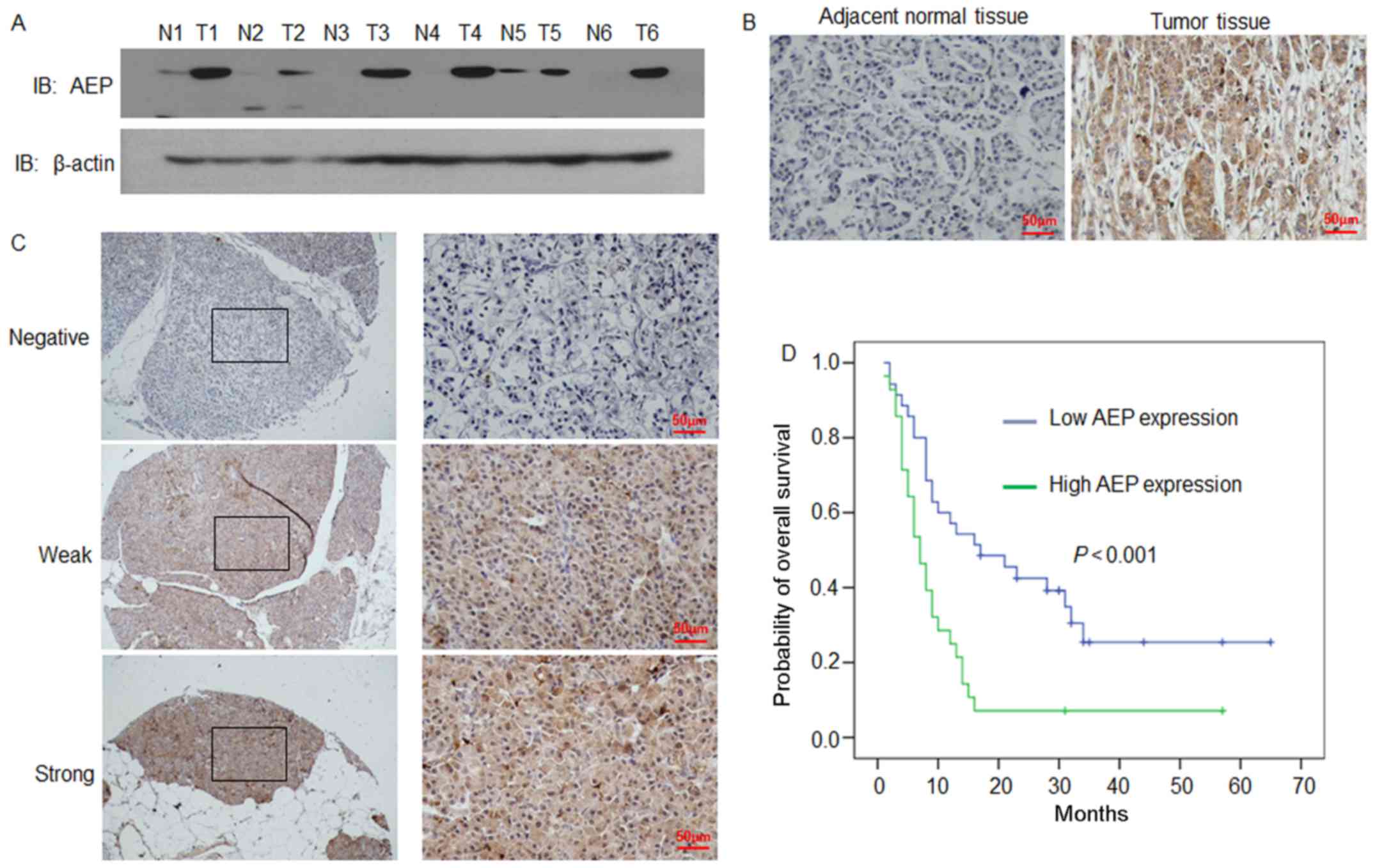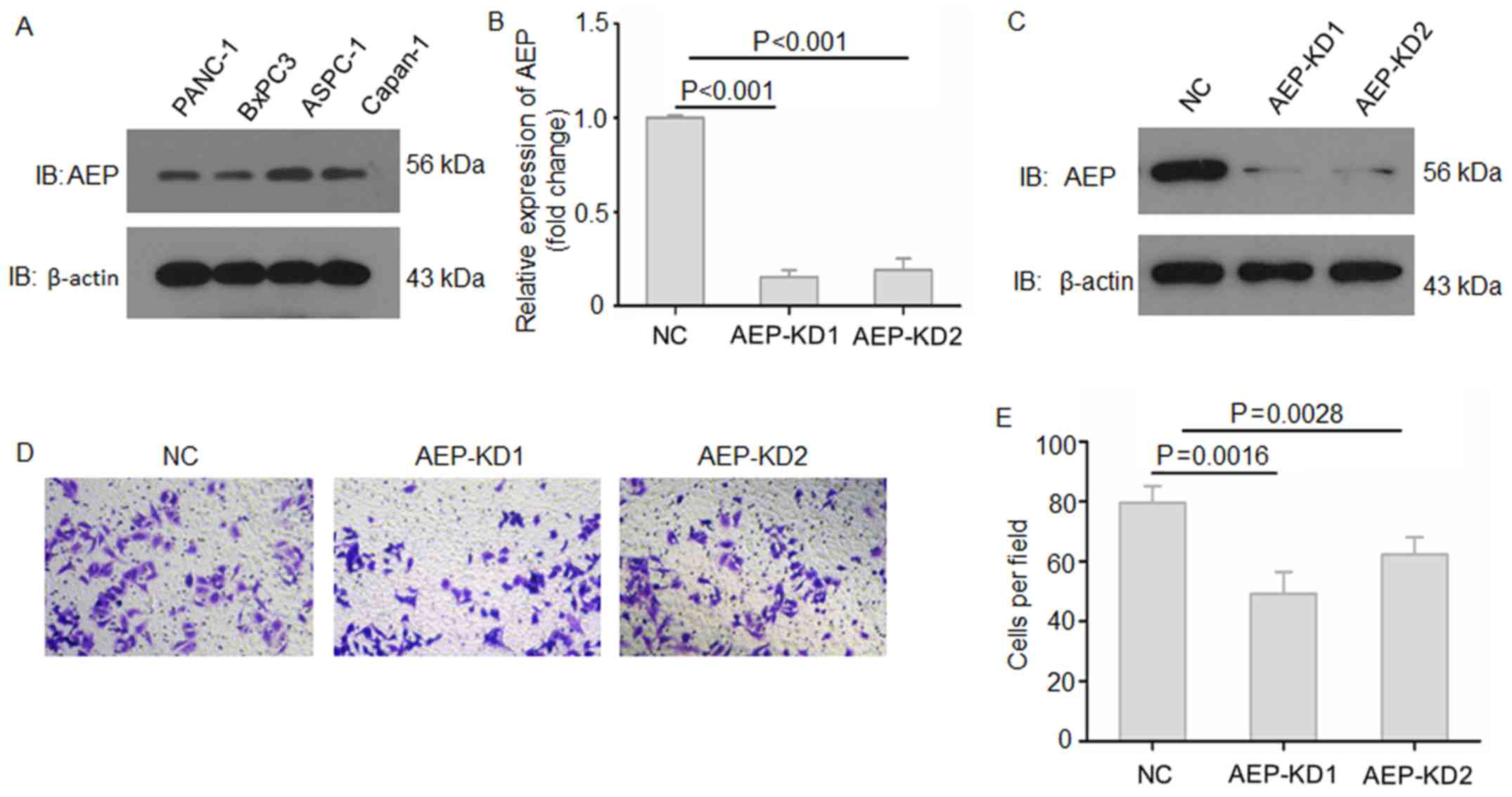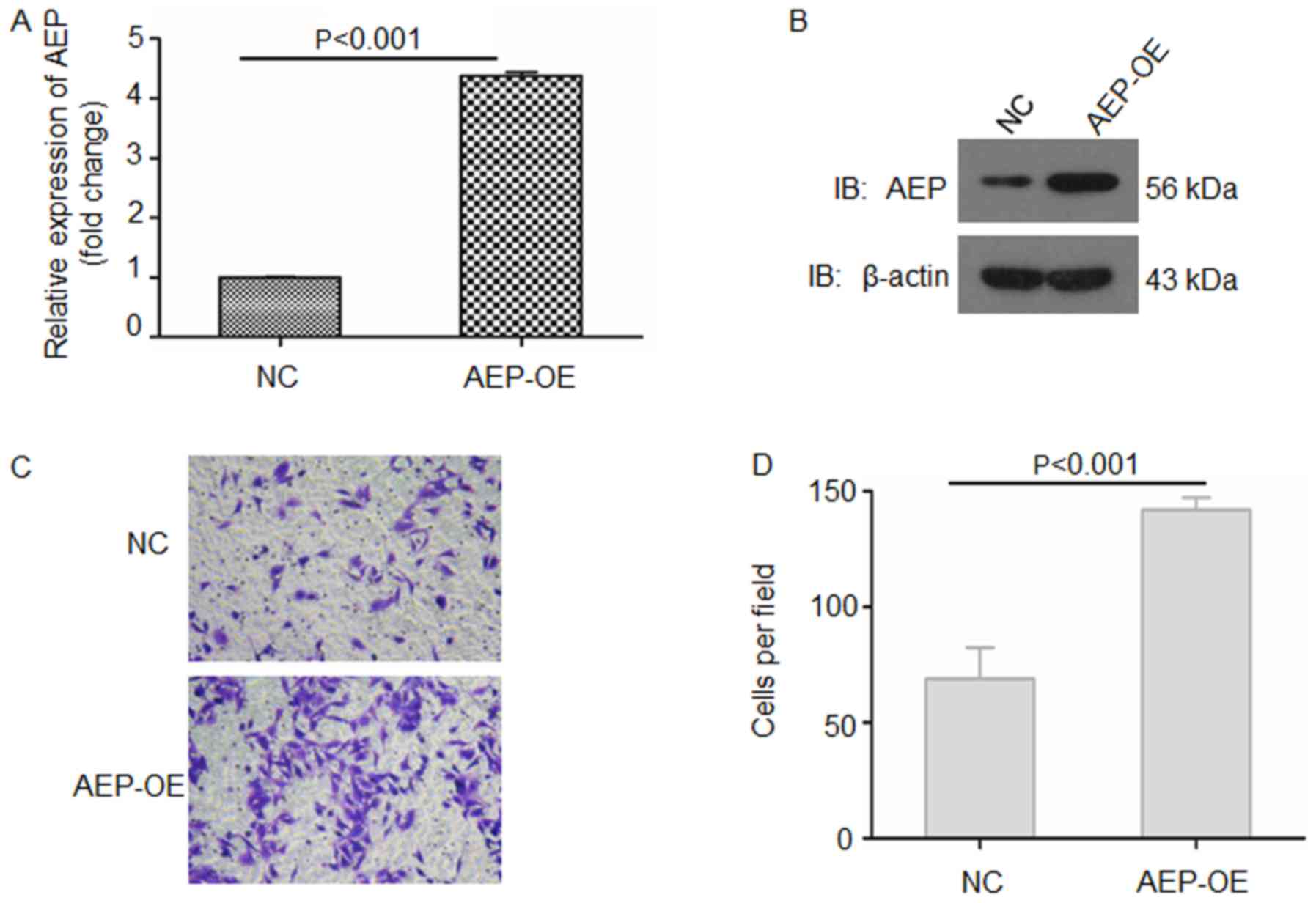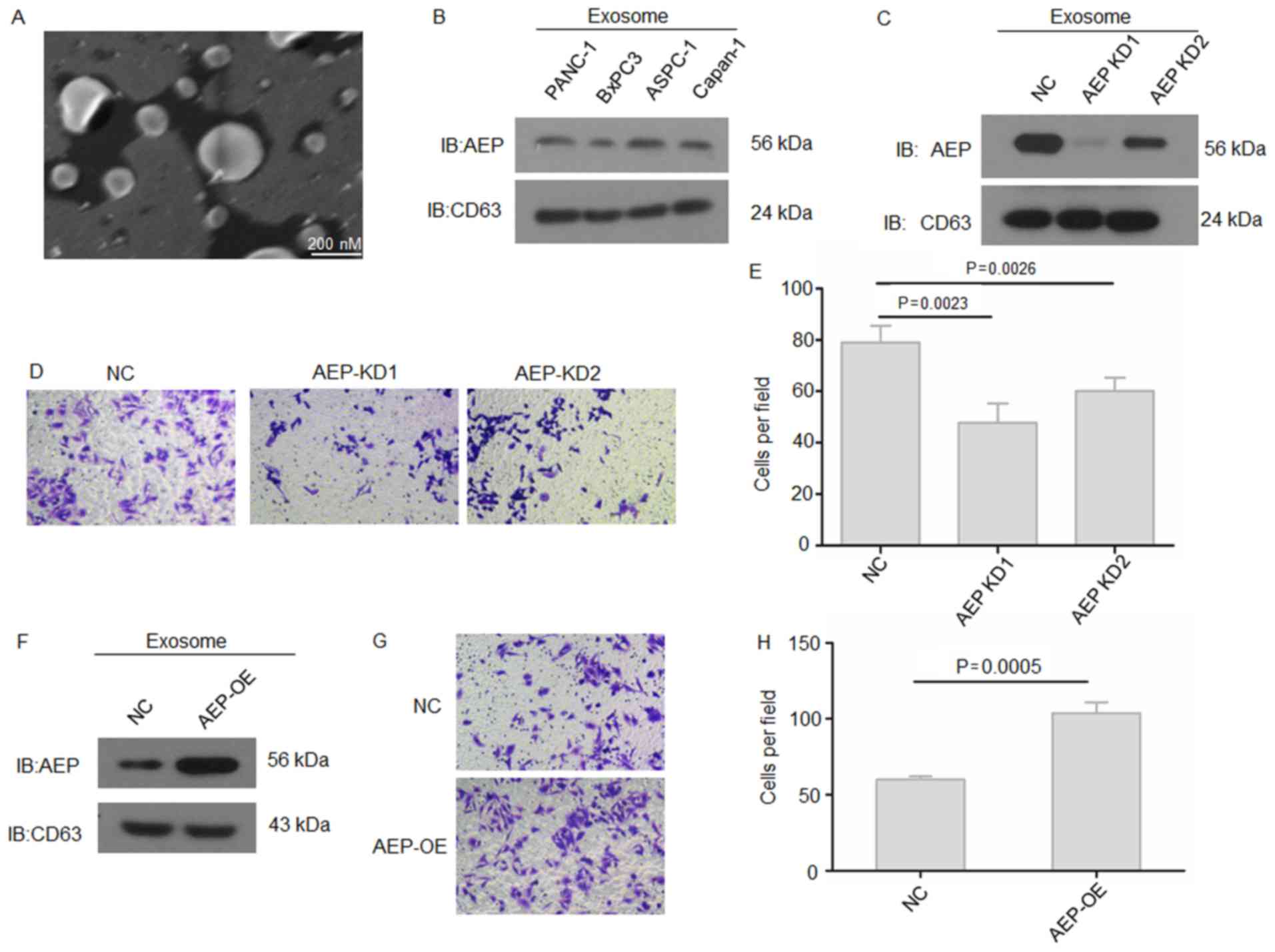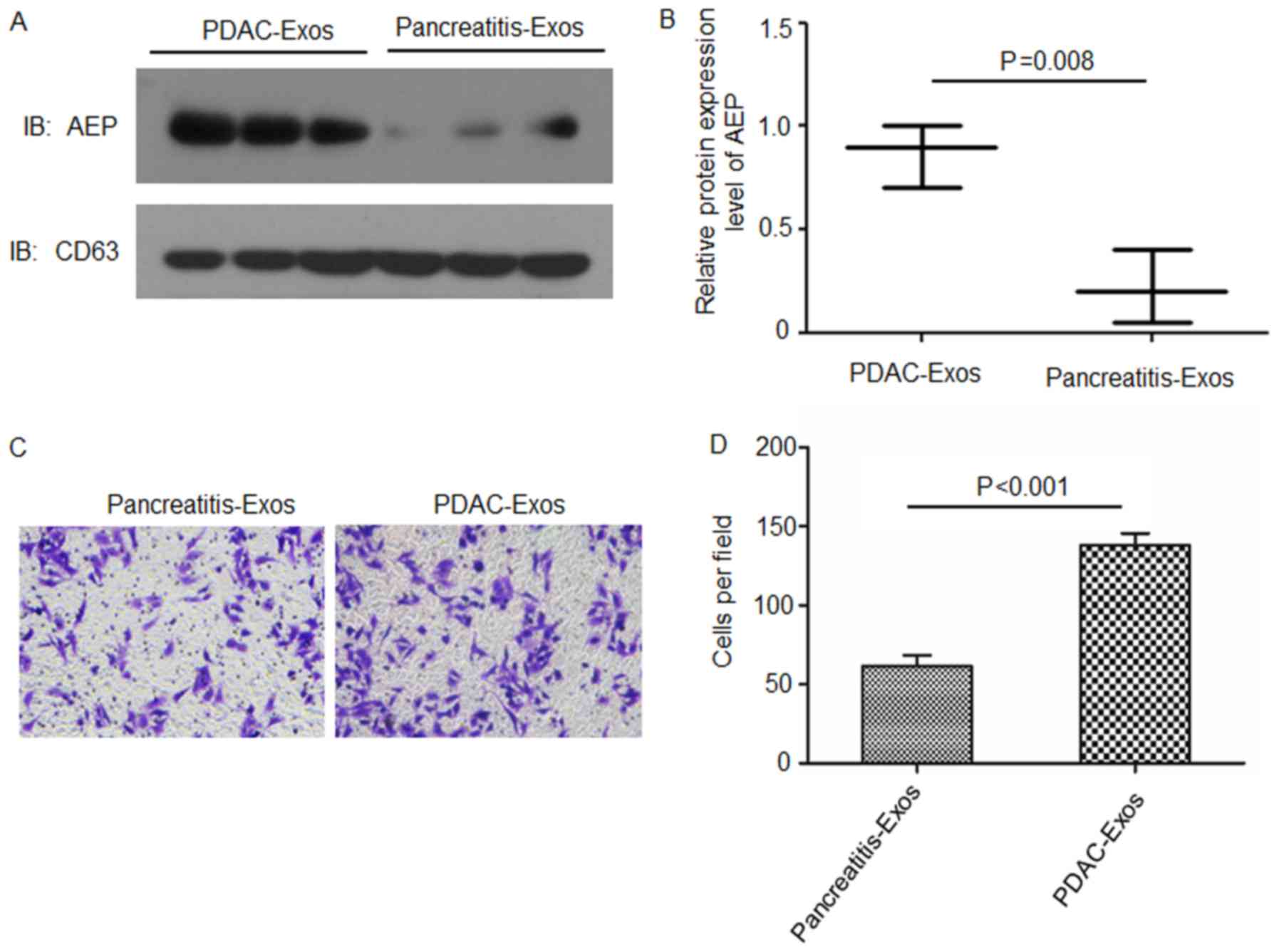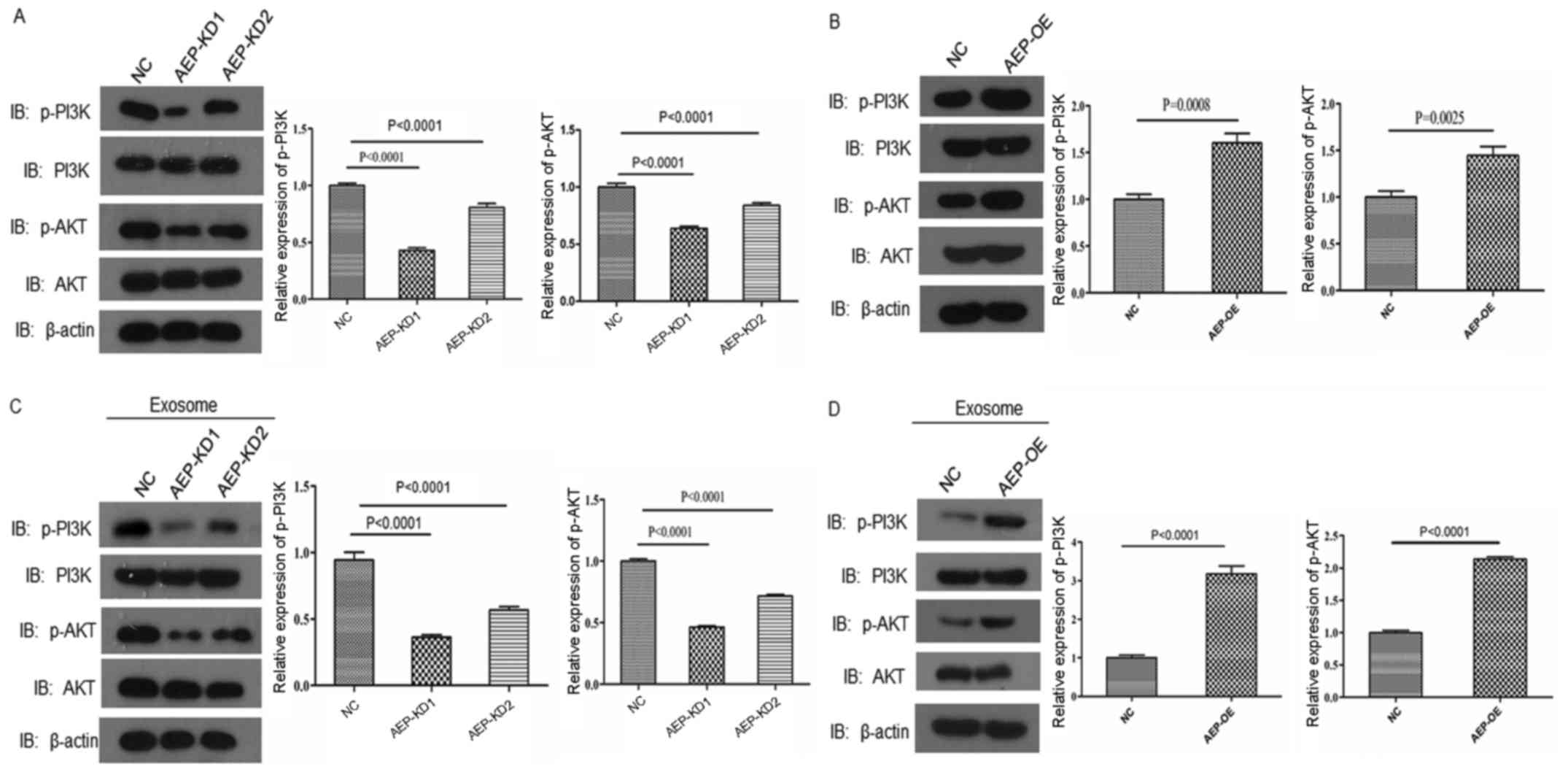|
1
|
Jemal A, Bray F, Center MM, Ferlay J, Ward
E and Forman D: Global cancer statistics. CA Cancer J Clin.
61:69–90. 2011. View Article : Google Scholar : PubMed/NCBI
|
|
2
|
Wood NJ: Pancreatic cancer: Pancreatic
tumour formation and recurrence after radiotherapy are blocked by
targeting CD44. Nat Rev Gastroenterol Hepatol. 11:732014.
View Article : Google Scholar : PubMed/NCBI
|
|
3
|
Liu P, Zhu Y and Liu L: Elevated
pretreatment plasma D-dimer levels and platelet counts predict poor
prognosis in pancreatic adenocarcinoma. Onco Targets Ther.
8:1335–1340. 2015. View Article : Google Scholar : PubMed/NCBI
|
|
4
|
Colbert LE, Hall WA, Nickleach D,
Switchenko J, Kooby DA, Liu Y, Gillespie T, Lipscomb J, Kauh J and
Landry JC: Chemoradiation therapy sequencing for resected
pancreatic adenocarcinoma in the National Cancer Data Base. Cancer.
120:499–506. 2014. View Article : Google Scholar : PubMed/NCBI
|
|
5
|
Jagadeeshan S, Krishnamoorthy YR, Singhal
M, Subramanian A, Mavuluri J, Lakshmi A, Roshini A, Baskar G, Ravi
M, Joseph LD, et al: Transcriptional regulation of fibronectin by
p21-activated kinase-1 modulates pancreatic tumorigenesis.
Oncogene. 34:455–464. 2015. View Article : Google Scholar
|
|
6
|
Ibrahim AM and Wang YH: Viro-immune
therapy: A new strategy for treatment of pancreatic cancer. World J
Gastroenterol. 22:748–763. 2016. View Article : Google Scholar : PubMed/NCBI
|
|
7
|
Al Haddad AH and Adrian TE: Challenges and
future directions in therapeutics for pancreatic ductal
adenocarcinoma. Expert Opin Investig Drugs. 23:1499–1515. 2014.
View Article : Google Scholar : PubMed/NCBI
|
|
8
|
Haugen MH, Johansen HT, Pettersen SJ,
Solberg R, Brix K, Flatmark K and Maelandsmo GM: Nuclear legumain
activity in colorectal cancer. PLoS One. 8:e529802013. View Article : Google Scholar : PubMed/NCBI
|
|
9
|
Herskowitz JH, Gozal YM, Duong DM, Dammer
EB, Gearing M, Ye K, Lah JJ, Peng J, Levey AI and Seyfried NT:
Asparaginyl endopeptidase cleaves TDP-43 in brain. Proteomics.
12:2455–2463. 2012. View Article : Google Scholar : PubMed/NCBI
|
|
10
|
Miller G, Matthews SP, Reinheckel T,
Fleming S and Watts C: Asparagine endopeptidase is required for
normal kidney physiology and homeostasis. FASEB J. 25:1606–1617.
2011. View Article : Google Scholar : PubMed/NCBI
|
|
11
|
van Endert P: Toll-like receptor 9: AEP
takes control. Immunity. 31:696–698. 2009. View Article : Google Scholar : PubMed/NCBI
|
|
12
|
Choi SJ, Reddy SV, Devlin RD, Menaa C,
Chung H, Boyce BF and Roodman GD: Identification of human
asparaginyl endopeptidase (legumain) as an inhibitor of osteoclast
formation and bone resorption. J Biol Chem. 274:27747–27753. 1999.
View Article : Google Scholar : PubMed/NCBI
|
|
13
|
Zhen Y, Chunlei G, Wenzhi S, Shuangtao Z,
Na L, Rongrong W, Xiaohe L, Haiying N, Dehong L, Shan J, et al:
Clinicopathologic significance of legumain overexpression in
cancer: A systematic review and meta-analysis. Sci Rep.
5:165992015. View Article : Google Scholar : PubMed/NCBI
|
|
14
|
D’Costa ZC, Higgins C, Ong CW, Irwin GW,
Boyle D, McArt DG, McCloskey K, Buckley NE, Crawford NT,
Thiagarajan L, et al: TBX2 represses CST6 resulting in uncontrolled
legumain activity to sustain breast cancer proliferation: A novel
cancer-selective target pathway with therapeutic opportunities.
Oncotarget. 5:1609–1620. 2014.
|
|
15
|
Sevenich L and Joyce JA: Pericellular
proteolysis in cancer. Genes Dev. 28:2331–2347. 2014. View Article : Google Scholar : PubMed/NCBI
|
|
16
|
Edgington-Mitchell LE, Rautela J,
Duivenvoorden HM, Jayatilleke KM, van der Linden WA, Verdoes M,
Bogyo M and Parker BS: Cysteine cathepsin activity suppresses
osteoclastogenesis of myeloid-derived suppressor cells in breast
cancer. Oncotarget. 6:27008–27022. 2015. View Article : Google Scholar : PubMed/NCBI
|
|
17
|
Zhu W, Shao Y, Yang M, Jia M and Peng Y:
Asparaginyl endopeptidase promotes proliferation and invasiveness
of prostate cancer cells via PI3K/AKT signaling pathway. Gene.
594:176–182. 2016. View Article : Google Scholar : PubMed/NCBI
|
|
18
|
Hingorani SR: Intercepting Cancer
Communiques: Exosomes as heralds of malignancy. Cancer Cell.
28:151–153. 2015. View Article : Google Scholar : PubMed/NCBI
|
|
19
|
Jørgensen M, Bæk R, Pedersen S,
Søndergaard EK, Kristensen SR and Varming K: Extracellular Vesicle
(EV) Array: Microarray capturing of exosomes and other
extracellular vesicles for multiplexed phenotyping. J Extracell
Vesicles. 2:22013. View Article : Google Scholar
|
|
20
|
Hoshino A, Costa-Silva B, Shen TL,
Rodrigues G, Hashimoto A, Tesic Mark M, Molina H, Kohsaka S, Di
Giannatale A, Ceder S, et al: Tumour exosome integrins determine
organotropic metastasis. Nature. 527:329–335. 2015. View Article : Google Scholar : PubMed/NCBI
|
|
21
|
Jeong D, Jo W, Yoon J, Kim J, Gianchandani
S, Gho YS and Park J: Nanovesicles engineered from ES cells for
enhanced cell proliferation. Biomaterials. 35:9302–9310. 2014.
View Article : Google Scholar : PubMed/NCBI
|
|
22
|
Gao Q, Zhao YJ, Wang XY, Guo WJ, Gao S,
Wei L, Shi JY, Shi GM, Wang ZC, Zhang YN, et al: Activating
mutations in PTPN3 promote cholangiocarcinoma cell proliferation
and migration and are associated with tumor recurrence in patients.
Gastroenterology. 146:1397–1407. 2014. View Article : Google Scholar : PubMed/NCBI
|
|
23
|
Kalluri R: The biology and function of
exosomes in cancer. J Clin Invest. 126:1208–1215. 2016. View Article : Google Scholar : PubMed/NCBI
|
|
24
|
Vitale G, Zappavigna S, Marra M, Dicitore
A, Meschini S, Condello M, Arancia G, Castiglioni S, Maroni P,
Bendinelli P, et al: The PPAR-γ agonist troglitazone antagonizes
survival pathways induced by STAT-3 in recombinant interferon-β
treated pancreatic cancer cells. Biotechnol Adv. 30:169–184. 2012.
View Article : Google Scholar
|
|
25
|
Missiaglia E, Dalai I, Barbi S, Beghelli
S, Falconi M, della Peruta M, Piemonti L, Capurso G, Di Florio A,
delle Fave G, et al: Pancreatic endocrine tumors: Expression
profiling evidences a role for AKT-mTOR pathway. J Clin Oncol.
28:245–255. 2010. View Article : Google Scholar
|
|
26
|
Stoll V, Calleja V, Vassaux G, Downward J
and Lemoine NR: Dominant negative inhibitors of signalling through
the phosphoinositol 3-kinase pathway for gene therapy of pancreatic
cancer. Gut. 54:109–116. 2005. View Article : Google Scholar
|
|
27
|
Martini M, De Santis MC, Braccini L,
Gulluni F and Hirsch E: PI3K/AKT signaling pathway and cancer: An
updated review. Ann Med. 46:372–383. 2014. View Article : Google Scholar : PubMed/NCBI
|
|
28
|
Polivka J Jr and Janku F: Molecular
targets for cancer therapy in the PI3K/AKT/mTOR pathway. Pharmacol
Ther. 142:164–175. 2014. View Article : Google Scholar
|
|
29
|
Toren P and Zoubeidi A: Targeting the
PI3K/Akt pathway in prostate cancer: Challenges and opportunities
(review). Int J Oncol. 45:1793–1801. 2014. View Article : Google Scholar : PubMed/NCBI
|
|
30
|
Lin Y, Qiu Y, Xu C, Liu Q, Peng B,
Kaufmann GF, Chen X, Lan B, Wei C, Lu D, et al: Functional role of
asparaginyl endopeptidase ubiquitination by TRAF6 in tumor invasion
and metastasis. J Natl Cancer Inst. 106:dju0122014. View Article : Google Scholar : PubMed/NCBI
|
|
31
|
Qiu JJ, Lin YY, Ye LC, Ding JX, Feng WW,
Jin HY, Zhang Y, Li Q and Hua KQ: Overexpression of long non-coding
RNA HOTAIR predicts poor patient prognosis and promotes tumor
metastasis in epithelial ovarian cancer. Gynecol Oncol.
134:121–128. 2014. View Article : Google Scholar : PubMed/NCBI
|
|
32
|
Liu C, Sun C, Huang H, Janda K and
Edgington T: Overexpression of legumain in tumors is significant
for invasion/metastasis and a candidate enzymatic target for
prodrug therapy. Cancer Res. 63:2957–2964. 2003.PubMed/NCBI
|
|
33
|
Livak KJ and Schmittgen TD: Analysis of
relative gene expression data using real-time quantitative PCR and
the 2(−Δ Δ C(T)) Method. Methods. 25:402–408. 2001. View Article : Google Scholar
|
|
34
|
Kogure T, Lin WL, Yan IK, Braconi C and
Patel T: Intercellular nanovesicle-mediated microRNA transfer: A
mechanism of environmental modulation of hepatocellular cancer cell
growth. Hepatology. 54:1237–1248. 2011. View Article : Google Scholar : PubMed/NCBI
|
|
35
|
Kamisawa T, Wood LD, Itoi T and Takaori K:
Pancreatic cancer. Lancet. 388:73–85. 2016. View Article : Google Scholar : PubMed/NCBI
|
|
36
|
Chen JM, Dando PM, Rawlings ND, Brown MA,
Young NE, Stevens RA, Hewitt E, Watts C and Barrett AJ: Cloning,
isolation, and characterization of mammalian legumain, an
asparaginyl endopeptidase. J Biol Chem. 272:8090–8098. 1997.
View Article : Google Scholar : PubMed/NCBI
|
|
37
|
Wang L, Chen S, Zhang M, Li N, Chen Y, Su
W, Liu Y, Lu D, Li S, Yang Y, et al: Legumain: A biomarker for
diagnosis and prognosis of human ovarian cancer. J Cell Biochem.
113:2679–2686. 2012. View Article : Google Scholar : PubMed/NCBI
|
|
38
|
Mulholland DJ, Kobayashi N, Ruscetti M,
Zhi A, Tran LM, Huang J, Gleave M and Wu H: Pten loss and RAS/MAPK
activation cooperate to promote EMT and metastasis initiated from
prostate cancer stem/progenitor cells. Cancer Res. 72:1878–1889.
2012. View Article : Google Scholar : PubMed/NCBI
|
|
39
|
Bartolomé RA, García-Palmero I, Torres S,
Lopez-Lucendo M, Balyasnikova IV and Casal JI: IL13 Receptor α2
signaling requires a scaffold protein, FAM120A, to activate the FAK
and PI3K pathways in colon cancer metastasis. Cancer Res.
75:2434–2444. 2015. View Article : Google Scholar
|



